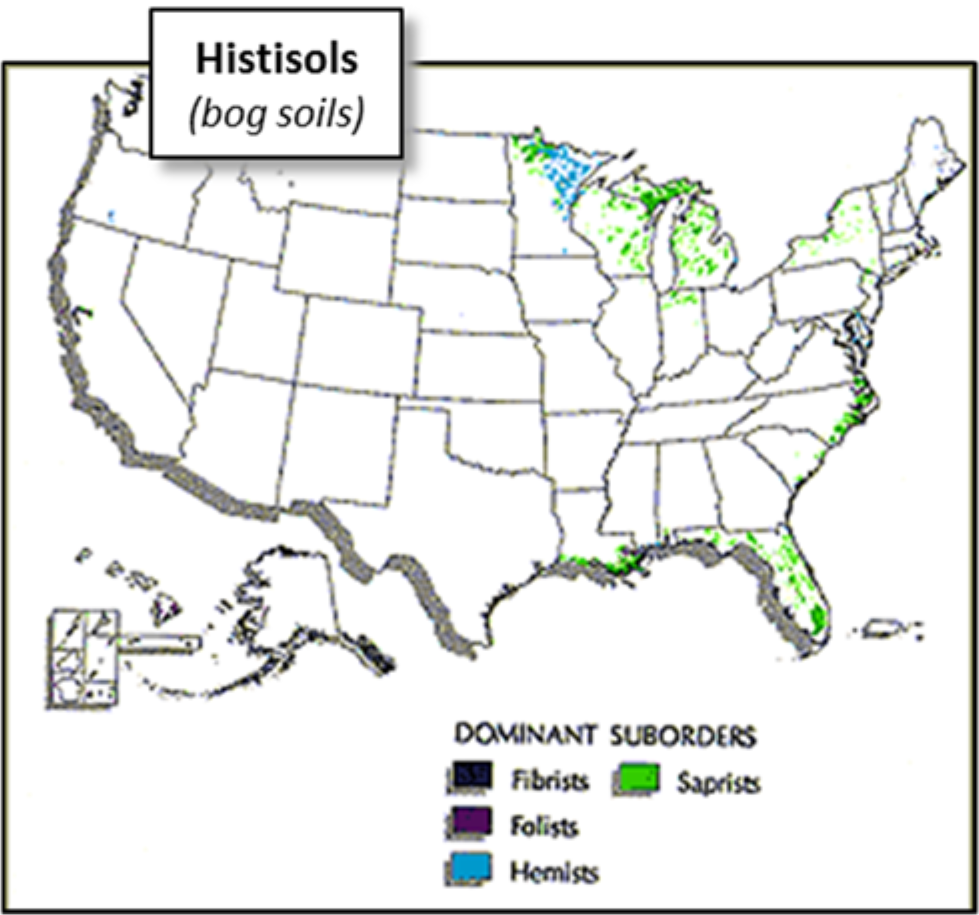⇦ Back to Soil Fertility and Plant Nutrition Home
¶ Introduction
Potassium adsorption and/or fixation is affected by both the amount of and the type of clay minerals that are present in the particular soil. Determining clay mineralogy is a complex analytical process, not part of routine soil testing methods. Individual soil types - and the clay minerals associated with them - develop certain characteristics depending on the original parent material and the subsequent degree of weathering.
Individual soils are classified by their characteristics using the USDA system of Soil Taxonomy. The most general level of classification is the “soil order”. All of the soils in the world can be assigned to one of just twelve orders (see Table 1). These soil orders are frequently defined by a single dominant characteristic affecting soils in that location, including:
- the prevalent vegetation (Alfisols, Mollisols),
- the type of parent material (Andisols, Vertisols),
- a climate variable such as lack of precipitation (Aridisols),
- a climate variable like the presence of permafrost (Gelisols),
- the amount of physical and chemical weathering present (Oxisols, Ultisols), and/or
- the relative amount of soil profile development that has taken place (Entisols).
These soil characteristics become important in potassium nutrient management because certain clay minerals are associated with certain of the soil orders (see Table 2). The clay minerals can impact the soil analysis results, potential potassium adsorption/fixation, and on potassium fertilizer management. The impact will differ, depending upon the specific soil type and clay mineralogy. The following tables and maps of soil orders provides some broad, general guidance to identify the geographic range and types of clay minerals that might be present in those soils
¶ Table 1. Soil Orders and General Descriptions |
|
|---|---|
| Order | Description |
| Alfisols | Deciduous forest soils; fertility and productivity greater than Ultisols, less than Mollisols |
| Andisols | Soil formed in volcanic material (ash, cinders)high natural fertility, productivity |
| Aridisols | Dry soils in arid (desert) climates; lime and salt accumulations are common |
| Entisols | Little, if any profile (horizon) development; commonly found in recent alluvium or sand deposits |
| Gelisols | Soils containing permafrost |
| Histosols | Soils formed in organic material; bogs and swamps |
| Inceptisols | Beginning stages of soil profile development; horizon differences just beginning to appear |
| Mollisols | "Soft", grassland soils; have naturally high organic matter and fertility |
| Oxisols | Extremely weathered, tropical soils; low fertility, high acidity; low shrink‐swell; iron/aluminu oxides |
| Spodosols | Acidic, coniferous forest soils; high organic matter, low natural fertility |
| Ultisols | Extensively weathered soils of warm, humid climates; low natural fertility, high soil acidity; can be productive with inputs |
| Vertisols | Clay soils with high shirnk/swell (cracking soils); dark colored, variable organic matter |
¶ Table 2. Dominant Clay Mineral Types Found in Different Soil Orders |
|||||||||
|---|---|---|---|---|---|---|---|---|---|
| General Weathering Intensity |
Soil Order* | Fe & Al Oxides | Kaolinite | Smectite | Illite | Vermiculite | Chlorite | Allophane | Intermediates |
| Low | Entisols | ✓ | ✓ | ||||||
| | | | | | | ↓ |
Andisols | ✓ | |||||||
| Inceptisols | ✓ | ✓ | |||||||
| Aridisols | ✓ | ✓ | ✓ | ✓ | |||||
| Vertisols | ✓ | ||||||||
| Mollisols | ✓ | ✓ | ✓ | ✓ | ✓ | ||||
| Alfisols | ✓ | ✓ | ✓ | ✓ | |||||
| Spodosols | ✓ | ✓ | ✓ | ||||||
| Ultisols | ✓ | ✓ | ✓ | ✓ | |||||
| High | Oxisols | ✓ | ✓ | ✓ | |||||
| Relative potential for potassium adsorption |
High | Low | Medium | Low | High | Low | Varies by pH | Varies | |
| Relative potential for potassium fixation |
Varies by pH | Low | Medium | High | High | Low | Varies by pH | Varies | |
| *For further information ‐ http://www.cals.uidaho.edu/soilorders/index.htm | |||||||||
¶ Figure 1. Alfisols

¶ Figure 2. Andisols
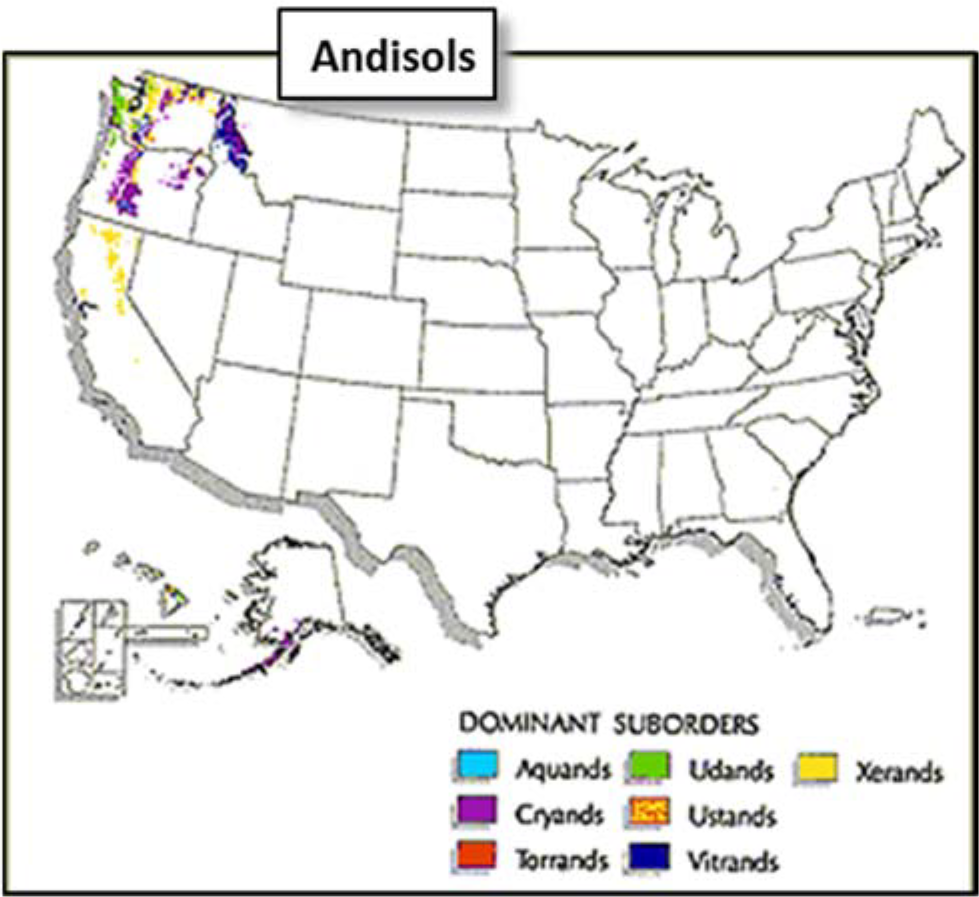
¶ Figure 3. Aridisols
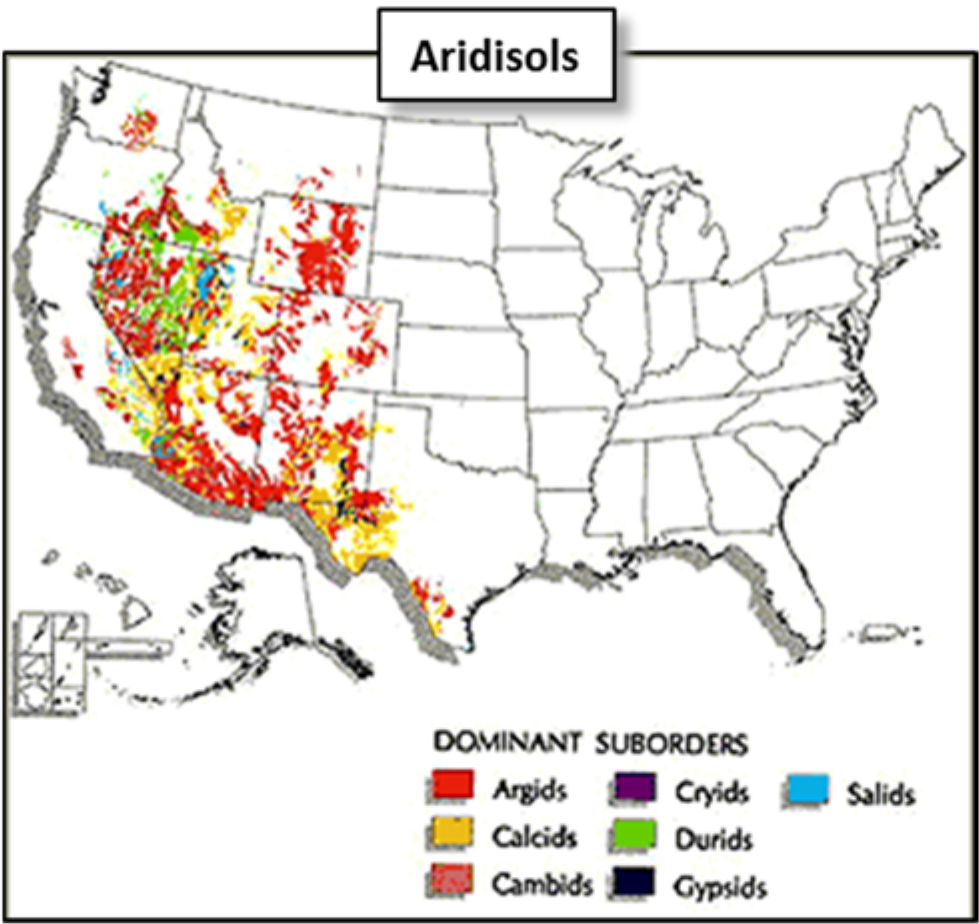
¶ Figure 4. Entisols
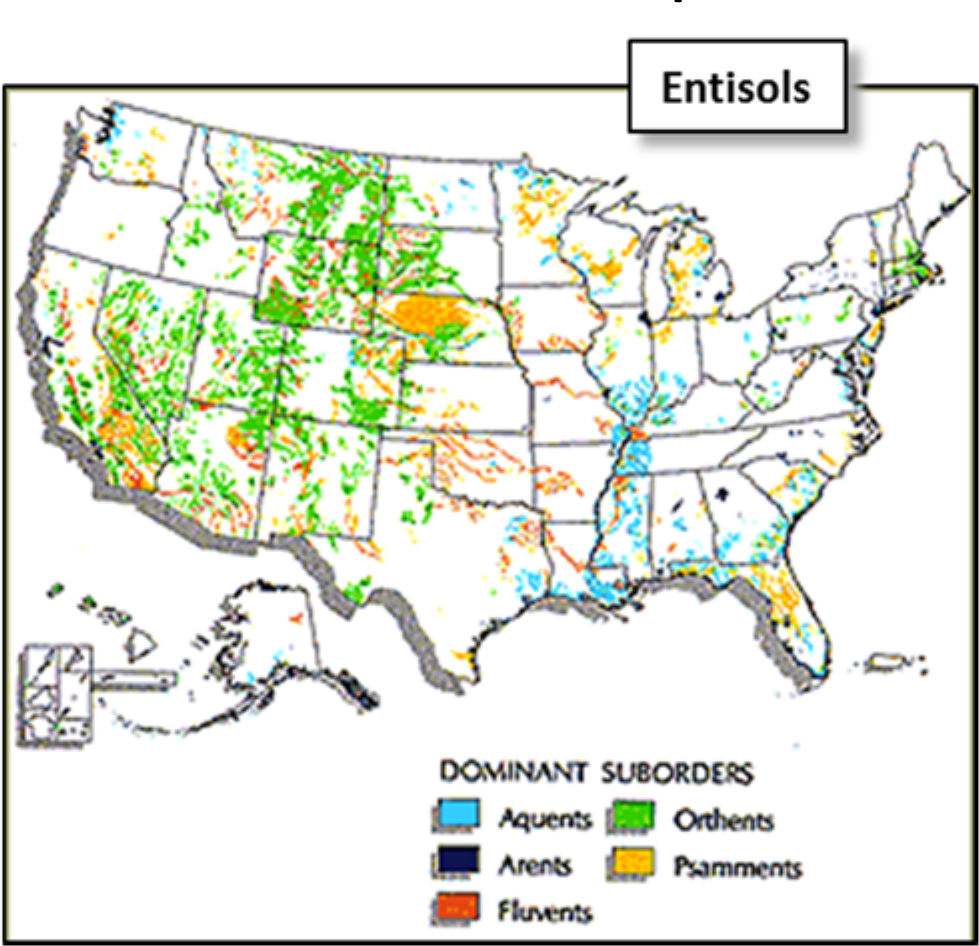
¶ Figure 5. Inceptisols
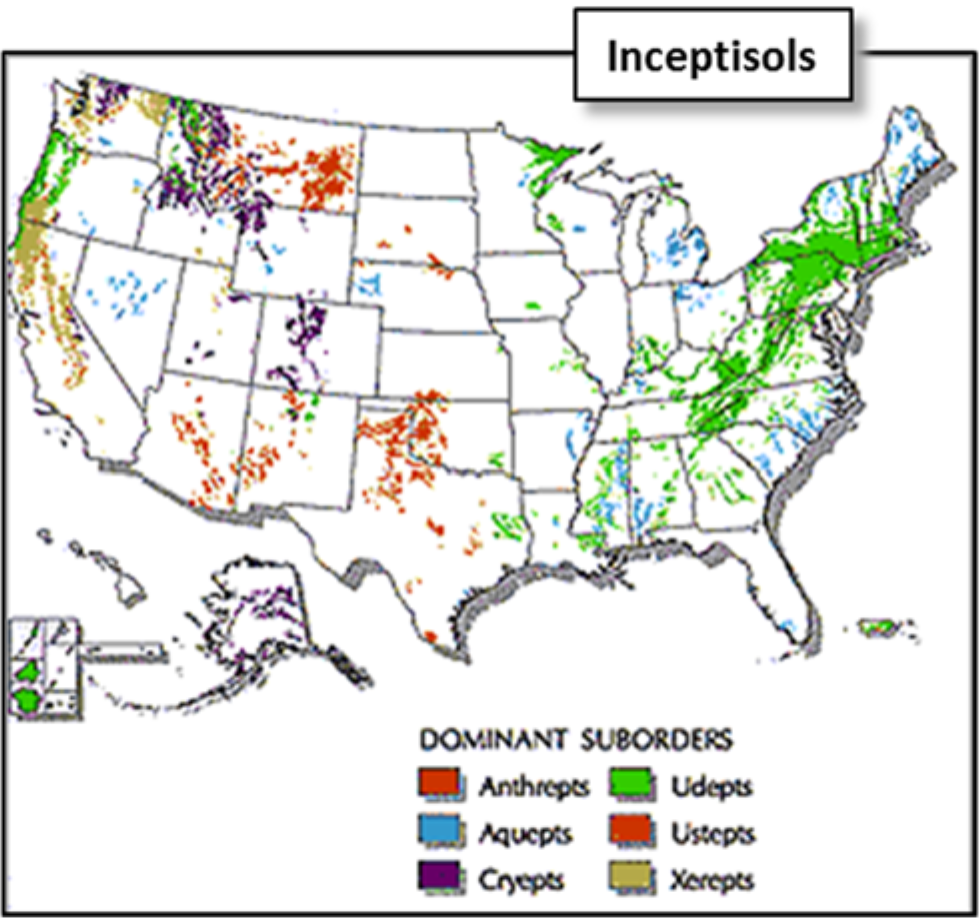
¶ Figure 6. Mollisols
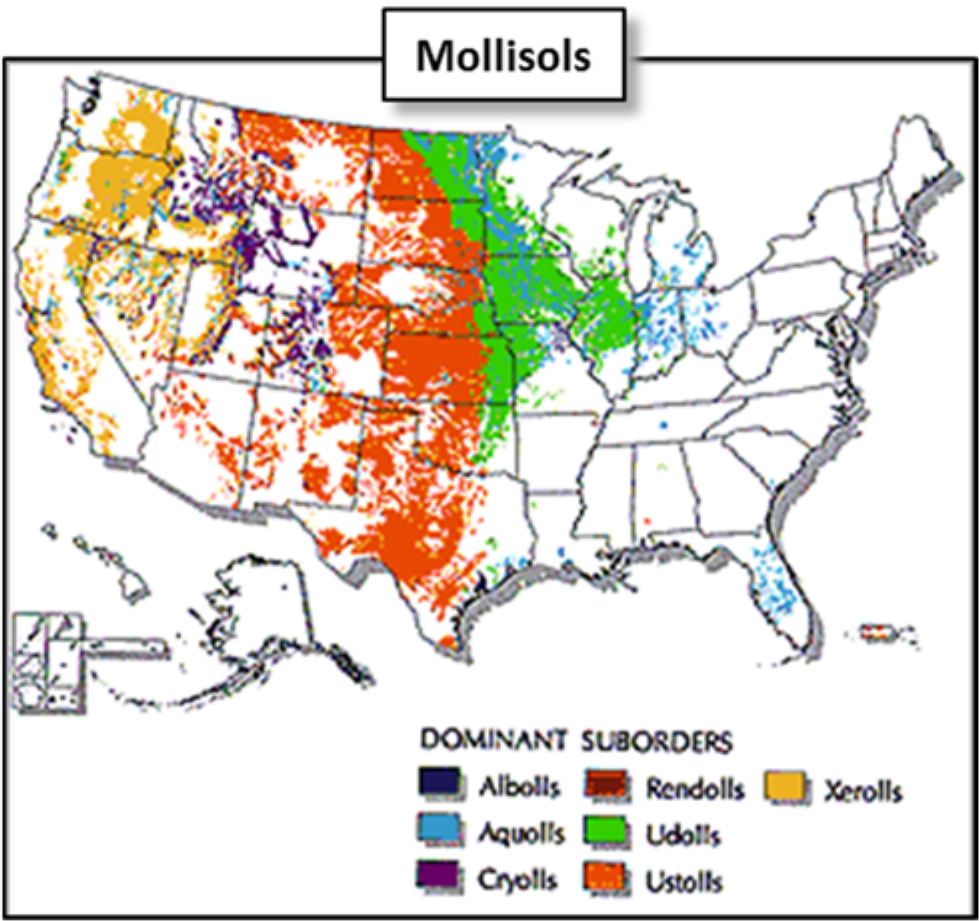
¶ Figure 7. Oxisols
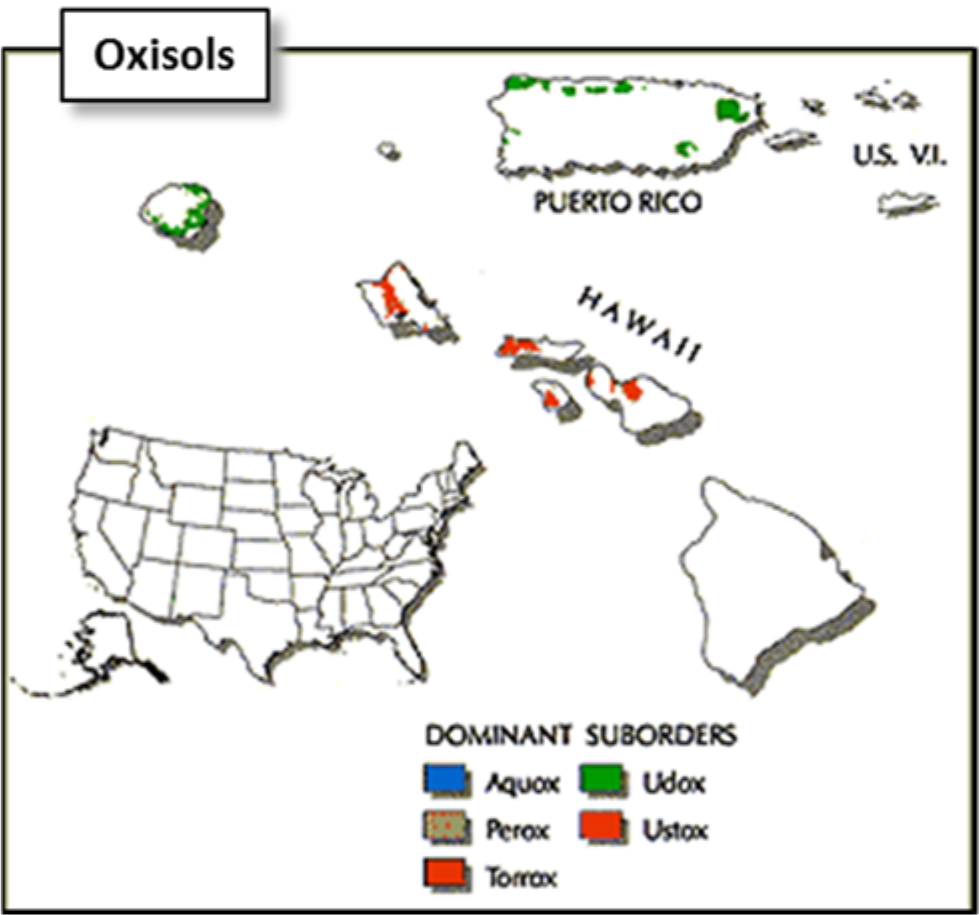
¶ Figure 8. Spodosols
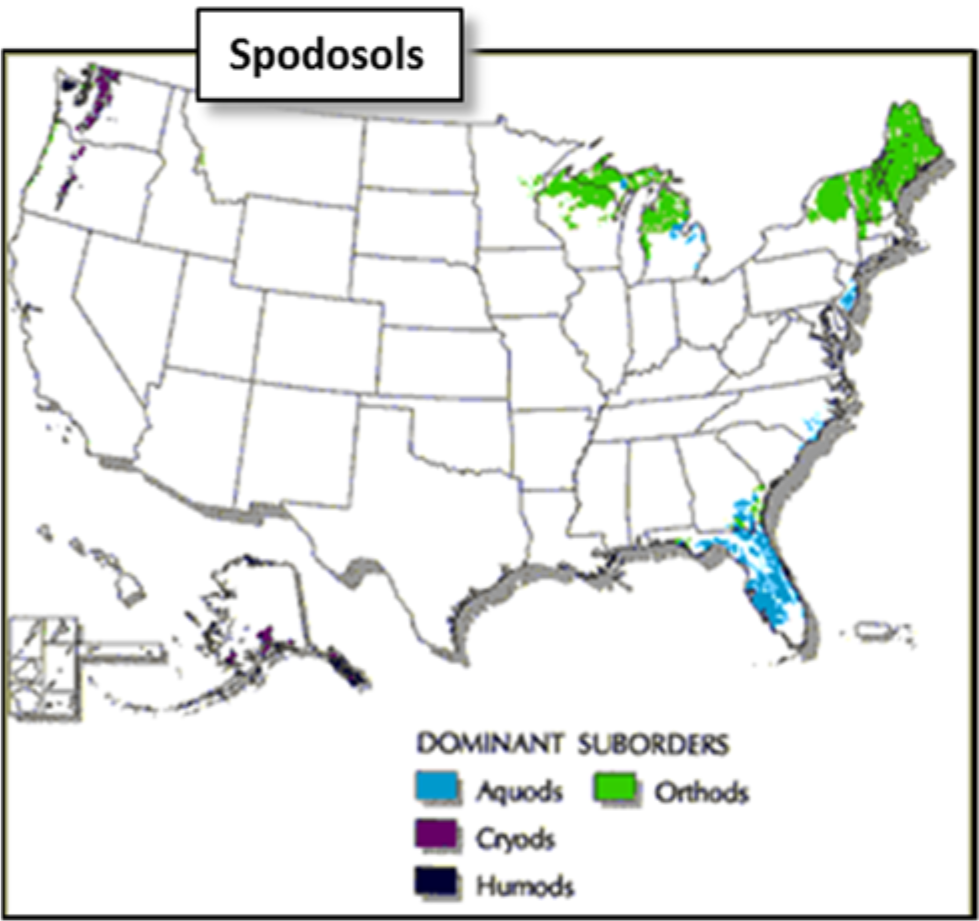
¶ Figure 9. Ultisols
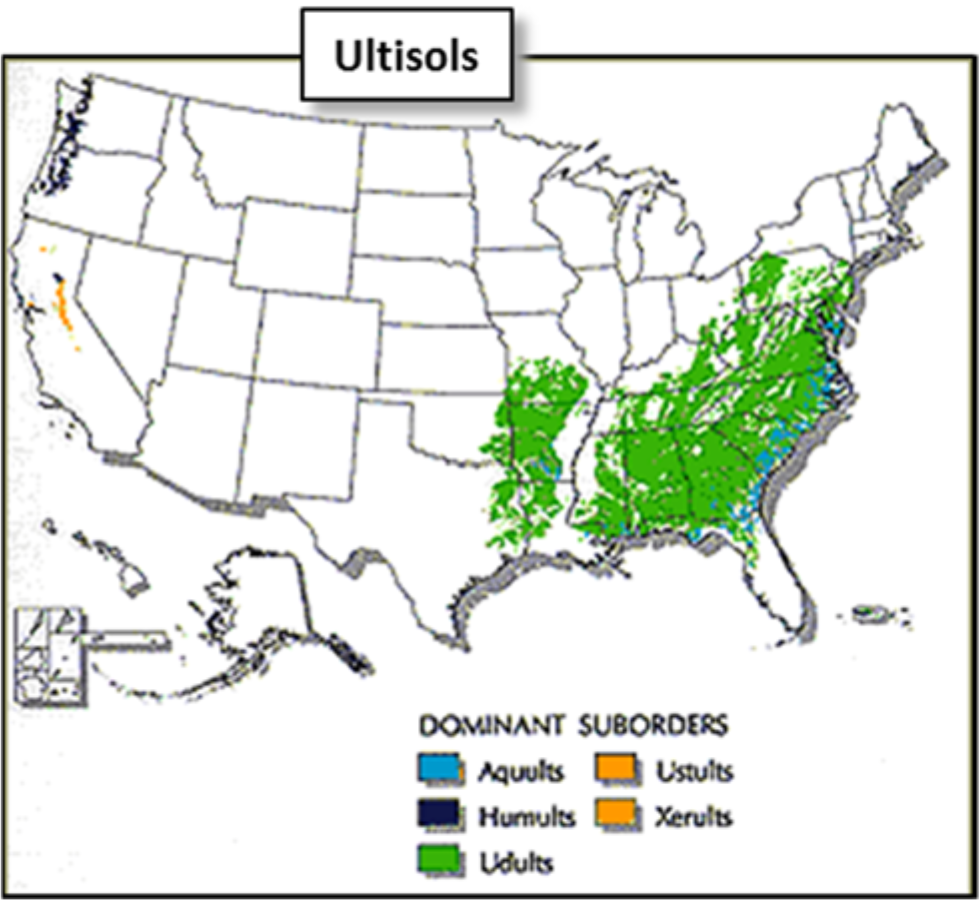
¶ Figure 10. Vertisols
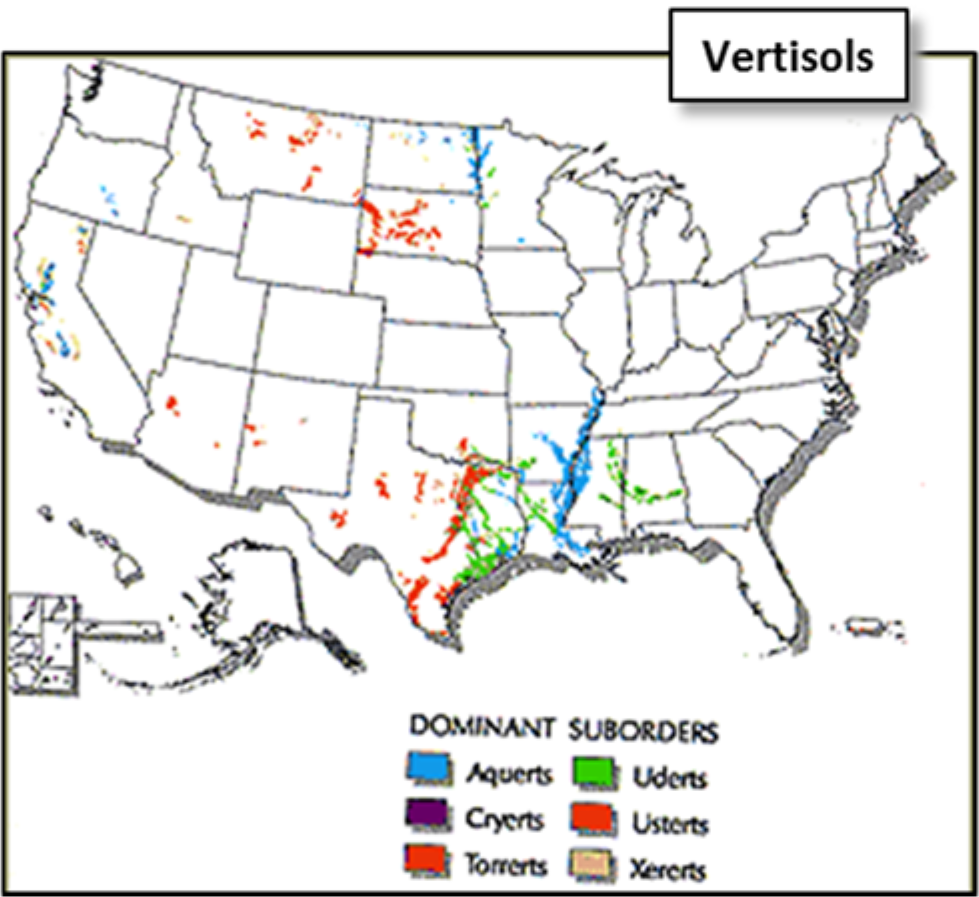
¶ Figure 11. Histisols
